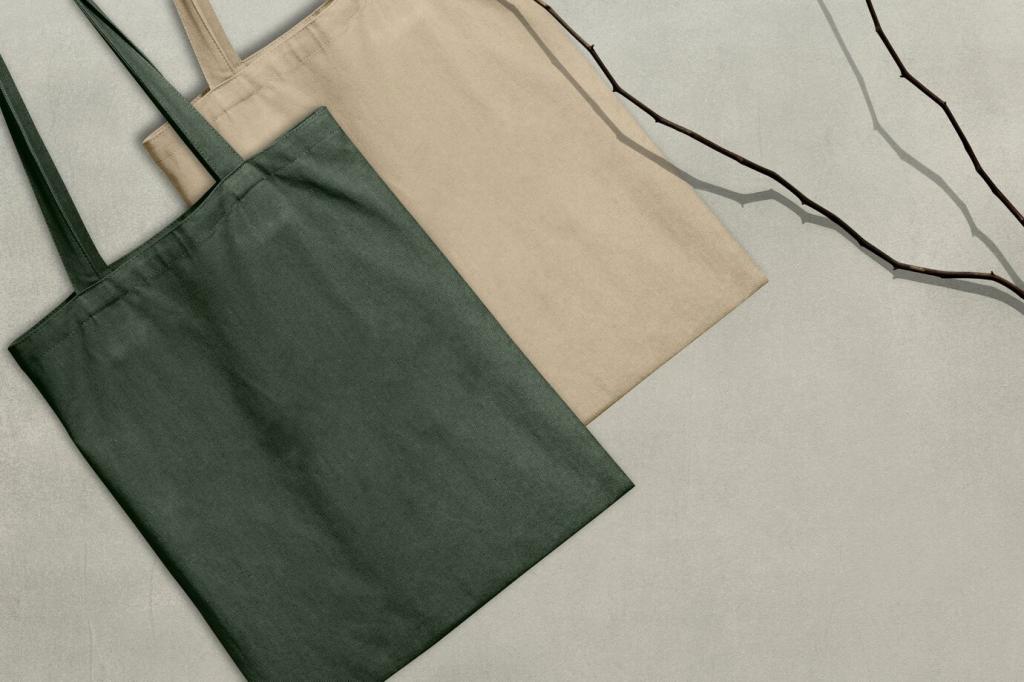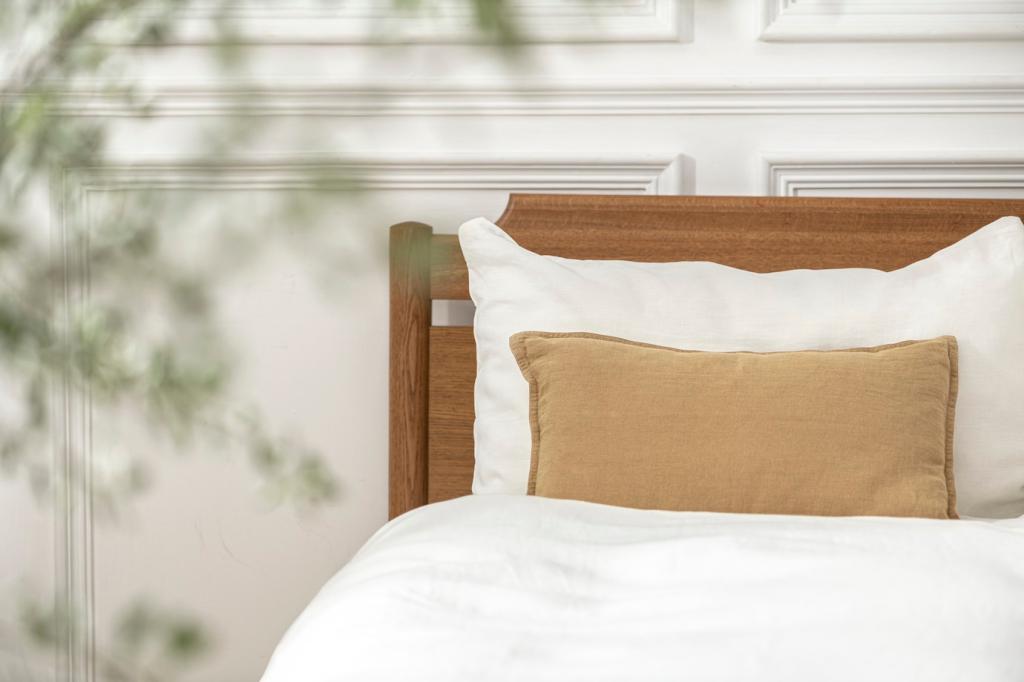Emerging Eco-Friendly Home Decor Trends
Reclaimed wood lends warmth and authenticity to interiors, offering a patina and character that new materials simply can’t match. Salvaged from old structures, each plank carries a distinct narrative, bringing a sense of history into modern spaces. Using reclaimed wood not only reduces the demand for new timber but also cuts down on landfill waste. As a result, homeowners can enjoy the natural texture and visual richness of reimagined wood while making a positive environmental choice.
Reclaimed and Upcycled Materials
Biodegradable and Organic Textiles
Luxurious Organic Cotton Bedding
Organic cotton is cultivated without the use of harmful pesticides or synthetic fertilizers, resulting in a luxurious and hypoallergenic fabric ideal for bedding. These sheets, duvets, and pillowcases offer breathability, softness, and peace of mind knowing that their production leaves a smaller environmental footprint. Opting for organic cotton not only supports sustainable agriculture but also ensures healthier sleep free from harsh chemical residues.
Bamboo’s Sustainable Versatility
Bamboo textiles are gaining popularity for their unmatched sustainability and comfort. As one of the fastest-growing plants, bamboo requires minimal water and no chemical inputs, making it an environmentally superior choice. The fibers are spun into silky, durable fabrics perfect for towels, rugs, and upholstery. Additionally, bamboo’s natural antimicrobial properties bring hygienic benefits to every corner of the eco-friendly home.
Hemp for Durability and Style
Hemp’s strong, resilient fibers create textiles that withstand daily wear while aging gracefully. Grown with little water and without pesticides, hemp is a highly regenerative crop that replenishes soil health. Decor items such as throws, cushions, and curtains made from hemp not only introduce an earthy texture and modern aesthetic but also promote a shift towards truly sustainable living.
Indoor Plants and Living Walls
The Rise of Indoor Plant Scaping
From small succulents on shelves to large statement potted trees, indoor plant scaping involves thoughtfully arranging greenery throughout living spaces. Plants not only absorb carbon dioxide and release oxygen but also filter toxins from the air, contributing to a healthier indoor environment. Decorating with plants infuses rooms with color, vitality, and a sense of calm, making them indispensable elements of eco-friendly decor.
Vertical Gardens and Living Walls
Living walls—vertical installations covered in lush vegetation—transform blank spaces into vibrant, living works of art. These gardens optimize limited floor space and can include everything from ferns to herbs and flowers. Living walls support biodiversity, improve insulation, and act as natural sound barriers. Creating a living wall at home can also inspire mindfulness and a deeper appreciation for the cycles of nature.
Edible Interiors: Herb Gardens Indoors
Growing herbs such as basil, mint, and rosemary inside the home is becoming a favorite for eco-minded individuals. Not only do these compact gardens offer fresh ingredients for cooking, but they also add fragrant beauty and require only minimal space. Cultivating herbs indoors reduces reliance on single-use packaging and long-distance shipping, encouraging a fresher and more sustainable approach to food and decor.

Non-Toxic Paints and Natural Finishes
Mineral-based paints, made from natural pigments and clay or lime, are lauded for their breathability and matte aesthetic. Unlike their synthetic counterparts, they do not emit harmful chemicals, making them safe for even the most sensitive households. Their natural resistance to mold and bacteria makes them particularly suitable for kitchens and bathrooms, ensuring long-lasting and health-conscious interiors.
Finishes made from plant oils and waxes—such as linseed, tung, or beeswax—are rapidly replacing petroleum-based varnishes. These natural finishes saturate wood beautifully, enhancing grain and depth without introducing toxins into the home. Easy to maintain and reapply, plant-based finishes align with eco-friendly values while preserving cherished wood furniture and flooring for generations.
For those seeking vibrant color choices without health risks, low-VOC and zero-VOC paints provide the perfect solution. These paints maintain excellent coverage and durability while eliminating off-gassing and indoor air pollution. By choosing low-VOC options, environmentally aware decorators can express their personalities on walls and cabinetry while creating a safer, cleaner home environment for loved ones.

Local Artisans and Fair Trade Decor
Hand-thrown ceramics, whether mugs, vases, or decorative bowls, bring unmatched individuality to interiors. Each piece reflects the unique touch of its maker, carrying subtle variations and personal touches that industrial production cannot replicate. Supporting local potters not only sustains time-honored craftsmanship but also strengthens communities and encourages eco-friendly production with smaller, artisanal batches.

Energy-Efficient Lighting Solutions
Advancements in LED Technology
LEDs remain at the forefront of eco-friendly lighting because they consume far less energy and last several times longer than traditional incandescent bulbs. The latest innovations deliver customizable color temperatures and dimming options, allowing homeowners to tailor their ambiance while saving on utility bills. LEDs now come in elegant designs that blend seamlessly into modern decor, highlighting how efficiency and aesthetics can go hand in hand.

Multifunctional and Minimalist Design
Furniture that Adapts and Saves Space
Multipurpose furniture—such as sofa beds, nesting tables, or expandable dining sets—addresses the need for flexibility in modern living. These pieces are designed to be both space-efficient and stylish, allowing smaller footprints without sacrificing comfort. By investing in adaptable furnishings, homeowners can avoid overbuying and make the most of their square footage, supporting a sustainable, clutter-free lifestyle.
Decluttering for an Eco-Conscious Home
A minimalist philosophy encourages the reduction of unnecessary items, focusing instead on meaningful possessions that truly add value. Decluttering not only creates more open, breathable space but also reduces the demand for new products and the resources needed to produce them. Thoughtful organization, curated displays, and responsible disposal of unwanted goods further reinforce eco-friendly principles within the home.
Streamlined Color Palettes and Simplicity
Minimalism in eco-friendly decor often includes a restrained color palette—think soft earth tones, creamy whites, and gentle greys—that soothes the senses and feels timeless. Simple shapes and clean lines dominate, emphasizing the intrinsic beauty of sustainable materials rather than ornate embellishments. This elegant simplicity cultivates a calm, restorative environment, supporting well-being and eco-awareness.
